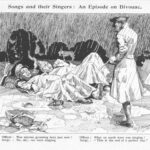For many, the infectious rhythm of the “Banana Boat Song” immediately conjures up nostalgic images of the classic animated Trio biscuit adverts from the early 1980s. However, beyond its catchy tune and advertising fame, lies a song with a rich history and surprising musical depth. Harry Belafonte’s rendition, featured on his groundbreaking album Calypso, achieved phenomenal success, holding the top spot on the Billboard pop chart for an astounding 31 weeks and becoming the first LP to sell a million copies. Considering this immense popularity, it’s interesting to note the scarcity of digital releases in its original mono format, with many versions seemingly altered with added stereo reverb. Furthermore, the prevalent sharpness of approximately 70 cents above concert pitch across versions suggests a subtle tape speed manipulation during the vinyl transfer, a common practice to inject extra energy into single releases.
The “Banana Boat Song,” or “Day-O” as it’s also known, is not an original composition but rather a traditional Jamaican folk song. Rooted in the work song tradition, it employs a call-and-response structure, characterized by a soloist delivering varied melodic phrases and lyrics interspersed with recurring group refrains – in this instance, the iconic “daylight come and me wan’ go home.” Belafonte’s version showcases subtle refinements to this structure. The refrain itself alternates between two slightly nuanced variations, most audibly distinguished by the final note of the lead vocal. Adding to its dynamic texture, all voices unite in unison with the soloist for the emphatic line, “six foot, seven foot, eight foot bunch,” creating a powerful collective vocal moment.
A fascinating aspect of the recording is the dynamic use of room reverb on Belafonte’s improvisational lead vocals during the introduction and outro. While this effect could have been achieved through fader manipulation in the control room, the natural ambience suggests a more organic approach. It’s plausible that this effect was created ‘live’ within the recording venue, reportedly Webster Hall’s Grand Ballroom in New York, perhaps by Belafonte physically moving closer and further from the microphones as he sang. However, a minor technical anomaly surfaces in the bass part. The dominant root note (C) resonates with significantly more prominence in the mix than the tonic (F). This imbalance arguably detracts from the intended harmonic foundation of the music. A potential cause could be microphone placement too close to the bass’s soundholes, potentially overemphasizing the instrument’s main air-cavity resonance around 70Hz, aligning closely with the C note’s fundamental frequency of 65Hz.
Adding a touch of human imperfection to this otherwise polished recording, a slight musical misstep occurs during the very first “tally me banana.” The bassist inadvertently plays an F instead of the intended G. This minor flub, almost imperceptible to casual listeners, adds a unique, human element to the track, prompting one to wonder if this detail ever made its way onto the bassist’s resume.
For deeper insights, explore the Wikipedia page on Day-O (The Banana Boat Song).

